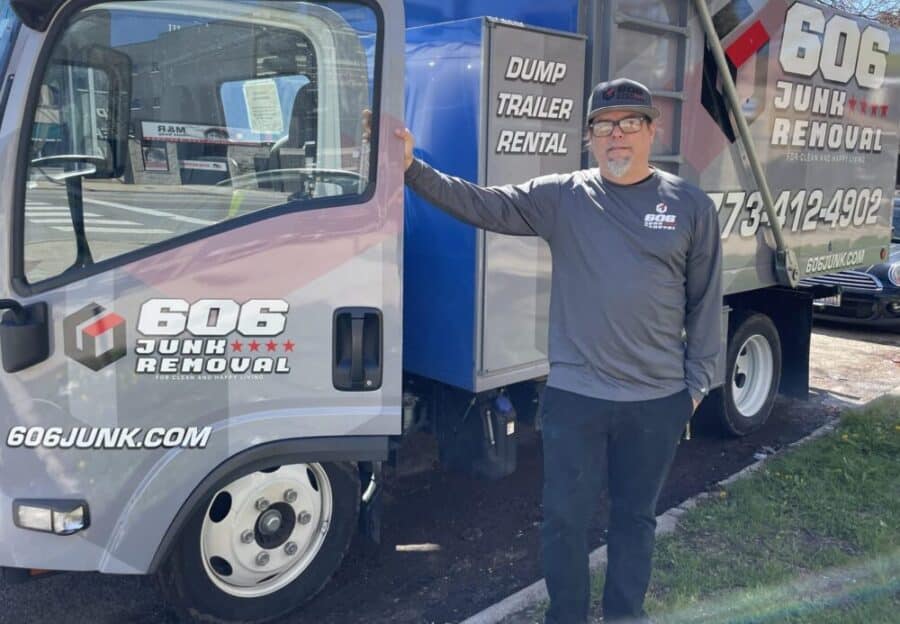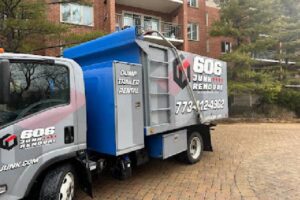
Dumpster rental isn’t a toss-and-go game. Not everything in your pile of discarded dreams is fair game for that big metal box. The truth is, certain materials dance with danger when sealed in a dumpster’s belly—think paints, batteries, solvents, or items whispering toxicity. These aren’t mere junk; they’re complications in disguise. Knowing the difference between what’s acceptable and what’s forbidden saves more than just a headache—it avoids violations and unexpected fees.
Take a moment to assess your discard inventory. Construction debris, furniture, or general clutter? All clear. But propane tanks? Hard no. This simple awareness could pivot your experience from chaotic to effortless. Rent a dumpster with foresight, and you won’t find yourself apologizing to the planet—or your wallet.
Size Isn’t Just a Number When Picking Your Dumpster
Choosing the right dumpster size isn’t just a technical decision—it’s the difference between a seamless project and a logistical headache. Rent too small, and you’ll quickly be calling for a second bin. Too large, and you’re wasting money on space you don’t need. Each dumpster size correlates with a specific project scale—10-yard for light cleanups, 20-yard for remodels, 30 or 40-yard for major construction or estate cleanouts. It’s not about guessing—it’s about forecasting.
Evaluate how much debris your project will generate and match that with volume, not optimism. Think in cubic yards, not just trash bags. A smart size choice saves you time, cash, and double work. Still unsure? Talk to the rental company—describe your project and let their experience guide you. When your dumpster fits just right, it becomes a tool of efficiency, not frustration. Don’t eyeball your clutter—plan for it.

Timing the Drop is Just as Important as the Haul
Timing your dumpster delivery can make or break your cleanup momentum. Too early, and it becomes an awkward driveway obstacle before a single item gets tossed. Too late, and your project gets stalled by a pile of junk waiting for its exit. Good dumpster scheduling is like choreography—you want it to arrive just as your mess is ready to move. Ideally, the dumpster shows up the day before or morning of your cleanout’s kickoff.
This gives you prep time without added pressure. Avoid weekends when possible, and be mindful of holidays that can delay pickups. Also, consider weather—it’s easier loading under clear skies than battling wind and rain. Work backward from your project deadline, factoring in buffer days. The key is balance: long enough to finish without rushing, short enough to avoid added fees. A well-timed drop keeps the process smooth, focused, and—most importantly—on your terms.
You Might Need a Permit Even to Park a Dumpster
Dumpsters don’t just magically belong wherever you drop them, especially in a city like Chicago. If your bin will sit on a street, sidewalk, or alley—even partially—you likely need a permit. It’s not just a formality; it’s about public access and safety. City codes protect pedestrian paths, traffic flow, and neighbor relations. Skip the permit, and you risk fines, forced removal, or angry knocks from city inspectors. Even private driveways aren’t always exempt—homeowner associations and rental agreements may have rules.
That permit, while seemingly tedious, can be the difference between a seamless cleanout and a bureaucratic mess. Fortunately, most rental companies can help you obtain one, or at least guide you through the process. Call your local permitting office before scheduling. A few simple questions now can save you hundreds later. When it comes to dumpster placement, playing by the rules pays off—literally.
The Ground Beneath the Dumpster Can Turn Into Trouble
Where you place your dumpster matters more than you think. Dumpsters are heavy even when empty, and once filled with debris, they become mini tanks on wheels. Setting one on soft soil, grass, or an incline is a recipe for disaster—sinking, sliding, or even tipping. Concrete driveways or compacted gravel are ideal, but even they aren’t immune to damage. That’s why smart renters use protective layers—plywood sheets or boards under the wheels distribute weight and prevent scraping or cracking.
Take slope and drainage into account too; water pooling around your bin creates safety hazards and complicates loading. And don’t forget access—can the truck safely drop off and pick up the unit without hitting wires, fences, or tree limbs? Think of your dumpster like a guest: it needs a proper spot, solid footing, and room to breathe. Prep the landing zone, and your rental experience gets a lot smoother.
Know What Weight Limits Really Mean Before You Overload
A dumpster’s size and its weight limit aren’t the same thing—and exceeding those weight limits can get expensive fast. Every bin has a cap based on structural integrity, safety regulations, and transport laws. That means your 20-yard dumpster might not handle a full load of concrete, bricks, or roofing shingles. You may still have room, but if it’s too heavy, you’ll pay for it—literally. Overages can add hundreds in fees, and worse, the hauler may refuse pickup if the load is unsafe.
Always ask about your dumpster’s weight threshold before loading heavy materials. Spread the weight evenly, start with dense items at the bottom, and mix in lighter debris. It’s a simple formula: balanced weight plus smart loading equals fewer surprises. Remember, junk removal isn’t about stuffing every inch—it’s about staying within bounds. Avoid costly lessons and make weight awareness part of your cleanout strategy.
Dumpster Rental Costs Have Layers You Might Not Expect
Dumpster rental pricing isn’t always as simple as “$X for X days.” The base rate is just the beginning. Hidden within the fine print are potential fees: fuel surcharges, overage penalties, permit costs, and charges for keeping the bin past your rental window. Some companies charge extra for specific materials or out-of-zone deliveries. Understanding your full cost means asking the right questions upfront.
How many tons are included? What’s the rate for additional days? Is there a fee for certain prohibited items accidentally tossed? What if your project gets delayed? Budget-conscious renters treat the agreement like a roadmap—not just a bill. Don’t rely on assumptions—read the contract, clarify the numbers, and plan accordingly. A few questions today can prevent sticker shock tomorrow. Dumpster rental should be a tool, not a trap. With transparency and smart planning, you’ll stay on track financially and operationally.
Tossing Prohibited Items Can Cost You More Than You Think
Not everything belongs in a dumpster—even if it fits. Landfills have strict guidelines, and so do dumpster rental companies. Toss in the wrong item and you could face fines, surcharges, or outright refusal of service. Paint cans, electronics, tires, batteries, mattresses, and anything hazardous (like chemicals or asbestos) are often banned or require special disposal. Think twice before treating your dumpster like a catch-all. It’s not a free-for-all—it’s a regulated service tied to waste management laws.
Before you load a single item, ask for the “do not toss” list. If you’re unsure, assume it’s prohibited until confirmed otherwise. Proper disposal of restricted items usually involves taking them to specialized facilities or arranging alternative pickup. Avoiding a few mistakes can save you hundreds and keep your project on the right side of the law. Responsible tossing isn’t just courteous—it’s the smart move.
Accessibility Matters When Placing the Dumpster
A dumpster’s usefulness depends heavily on where it’s placed. Poor placement can make loading harder, delay pickup, or even cause safety hazards. Tight alleys, steep slopes, low-hanging wires, or soft lawns can complicate delivery and use. That’s why you need to think like a site planner before the bin even arrives. Also consider neighbors, mail service, and emergency access—blocking these can lead to fines or complaints.
The best location is close to the work zone, accessible to the driver, and free from obstacles. If in doubt, ask the rental company for a site check or placement advice. The right spot turns your dumpster into a cleanup ally. The wrong one turns it into a multi-day nuisance. Plan smart. Drop wisely.
Dumpster Rental Isn’t Just for Construction Sites Anymore
Once associated strictly with construction crews and major renovations, dumpsters have found a new audience: everyday homeowners and renters tackling life’s messier moments. Moving? Downsizing? Deep-cleaning before the holidays? Hosting a large event? These are all great reasons to rent a dumpster. Think of it as a temporary relief valve for life’s overflow.
Instead of making dozens of trips to the dump or overloading curbside bins, a dumpster gives you control, space, and speed. It’s perfect for attic purges, yard debris, estate cleanouts, or prepping a home for sale. You don’t need blueprints and power tools to justify a rental—just a project that needs clearing. The stigma of “dumpsters are for construction” is outdated. In today’s world, they’re a tool for anyone ready to hit reset on their space. It’s not about what you’re building—it’s about what you’re clearing out.
Conclusion
Renting a dumpster may seem simple on the surface, but there’s a lot more that goes into it than just choosing a size and setting a date. It’s important to understand city regulations, weight limits, what can and can’t go in the bin, and even where the dumpster can legally be placed. These details can impact the cost, timing, and overall success of your cleanout. Savvy renters know that being informed saves time, money, and headaches.
If you’re in the Chicago area and want a hassle-free experience from start to finish, 606 Junk Removal and Dumpster Rental has you covered. With deep roots in the local community, they offer dependable service, expert advice, and no-nonsense pricing. Give them a call at 773-412-4902 or email info@606junk.com to get started today.
